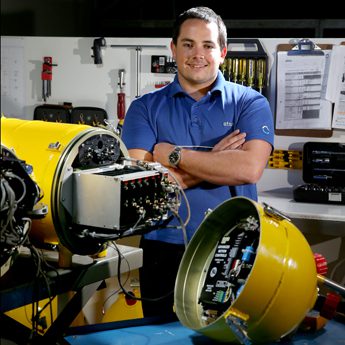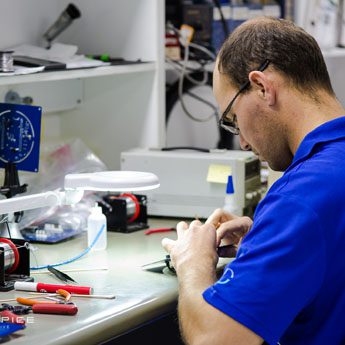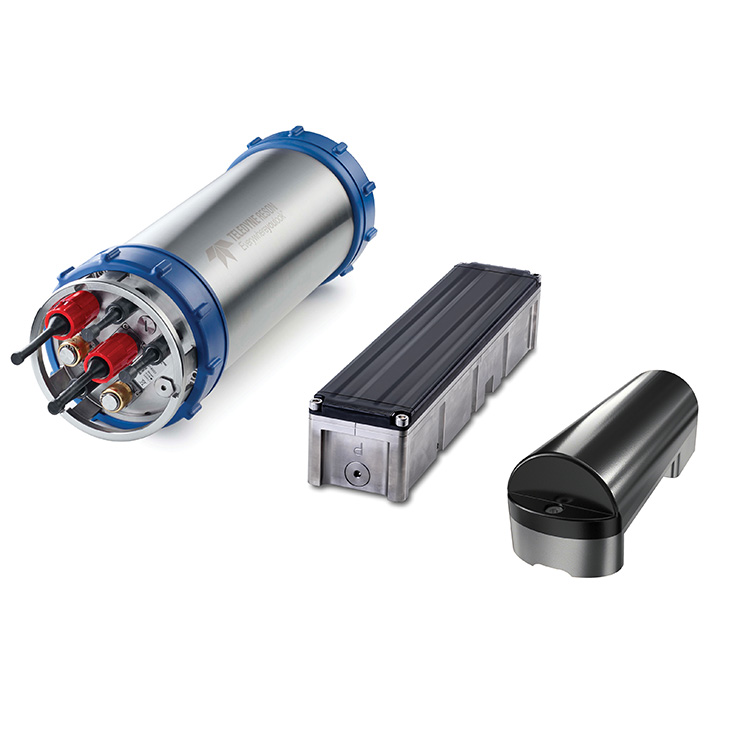Research and Development
Our commitment to Research and Development (R&D) provides innovation that drives the company forward.
BlueZone invests in R&D, particularly ocean engineering and associated technologies, to ensure we are known as an essential contributor to Australia’s ocean engineering capability, especially in the field of underwater vehicles and systems.
Our rationale is that the worlds’ oceans remain largely unexplored: 71% of the surface of the globe is water, 80% of all life is found beneath the surface and almost a third of all oil comes from offshore fields. The world’s oceans are the largest active carbon sink on Earth and understanding the oceans is fundamental to understanding the impact of climate change on the planet. Underwater technology creates the tools to measure, manage and utilise ocean resources.


Research and Development begin with skill development in high schools, which encourages students to select Science, Engineering, Technology and Maths (STEM), subjects, so that further studies in science and engineering are possible. To support this, BlueZone provides placements for high school work experience students, supports engineering awards at high schools and participates in programs such as the Manufacturing Engineering (ME) program and F1 in schools.
Our “Build Your Own ROV (Remotely Operated Vehicle)” is a perennially popular project for high school students, who work under the guidance of our workshop staff to procure, assemble and test their own ROV in a one week project. This project introduces students to some of the challenges and techniques, in design and engineering for marine environments and gives them an exciting experience of a career in ocean engineering.
At the university level, we sponsor PhD students from major Australian universities including ANU and the University of Newcastle and support 4th-year engineering student projects, including the Seafox Remotely Operated Vehicle (ROV) and an Autonomous Underwater Vehicle (AUV). Our engineering internship placements aim to provide interesting and motivating projects for engineering students completing their work experience requirements. We have hosted students from the University of Newcastle, Sydney University, Curtin University and the University of Southern California at Santa Barbara, USA.
Our engineering team is comprised of Bachelor of Engineering graduates, who undertook the innovative and challenging projects, product development research and development tasks alongside their commitments to service and sales support for our customers. We aim to leverage partnerships with industry, government research organisations and universities, to deliver the best solution technology can offer, and the expertise to take that solution from theoretical to practical.
Related Products
Website under development. Please use our hire enquiry form on the right to contact UVS for further details on this equipment.
Read moreWebsite under development. Please use our hire enquiry form on the right to contact UVS for further details on this equipment.
Read moreThe Devil Ray T38 is a medium USV system based on a high-performance dual sponson platform that has multiple world records for manned speed and stability.
Read moreRelated articles
Beyond the Surface: ArtemisSAR Enhances Diver Safety in Hostile Waters
How Sonar Technology is Transforming Search and Rescue Operations In the Northern Territory, just off the coast of Darwin, sits the BlueZone team in a small aluminum boat. Infamous...
Read MoreKraken Robotics release KATFISH Autonomous Launch and Recovery System
Smooth and Safe Operations without Human Intervention Kraken Robotics (Canada) endeavour to drive innovation beneath the surface. Striving to improve the safety and effectiveness of launch and recovery operations...
Read MoreNext-Generation Water Monitoring with ARES Optical Sensors
Precision, performance, and flexibility—now available exclusively in Australia through BlueZone Group With a powerful new tool at their fingertips, environmental professionals and marine researchers can take water monitoring to...
Read MoreTeledyne Marine: SeaBat T51-S Enhancing Deepwater Survey
Setting New Standards in High Resolution Subsea Mapping Known for their innovative subsea imaging, and seismic technologies, Teledyne Marine redefines expectations in subsea high-resolution mapping with the introduction of...
Read More


